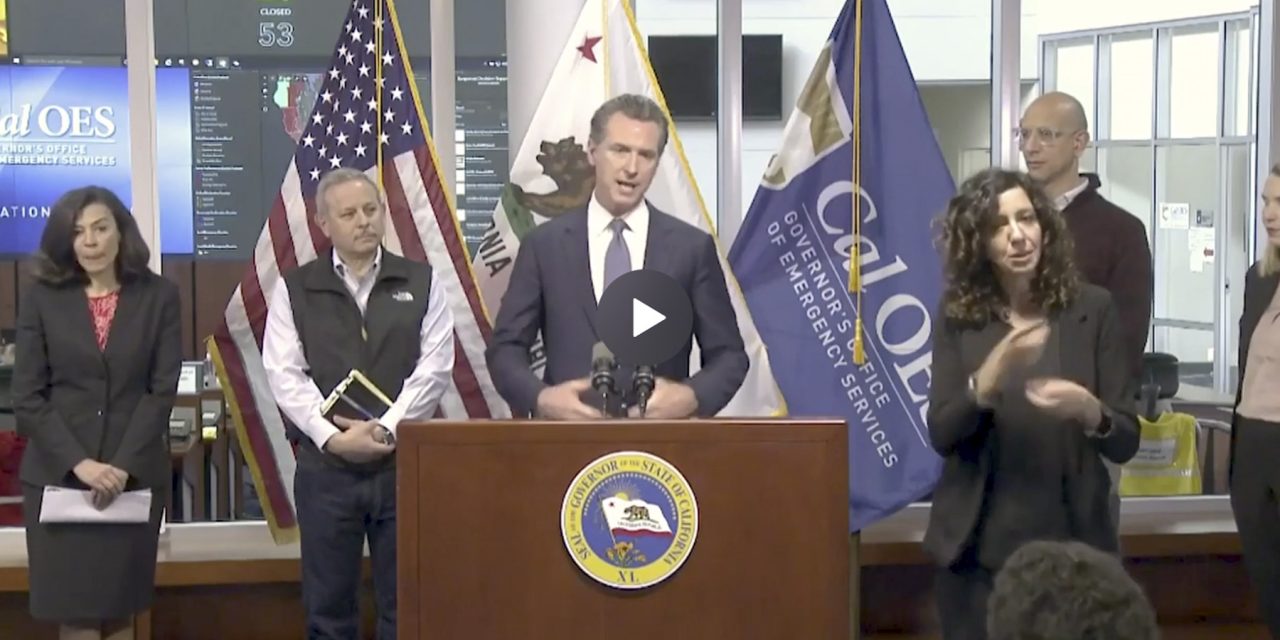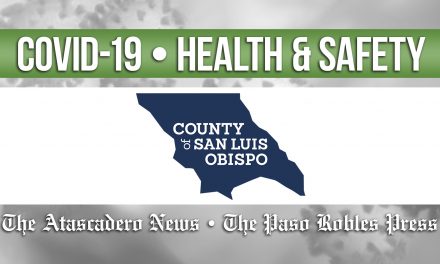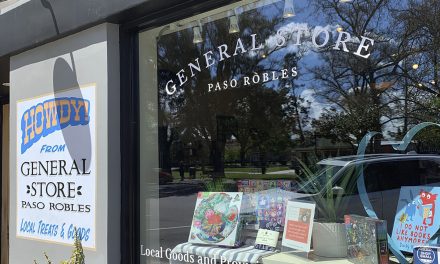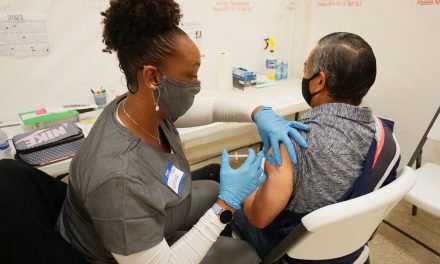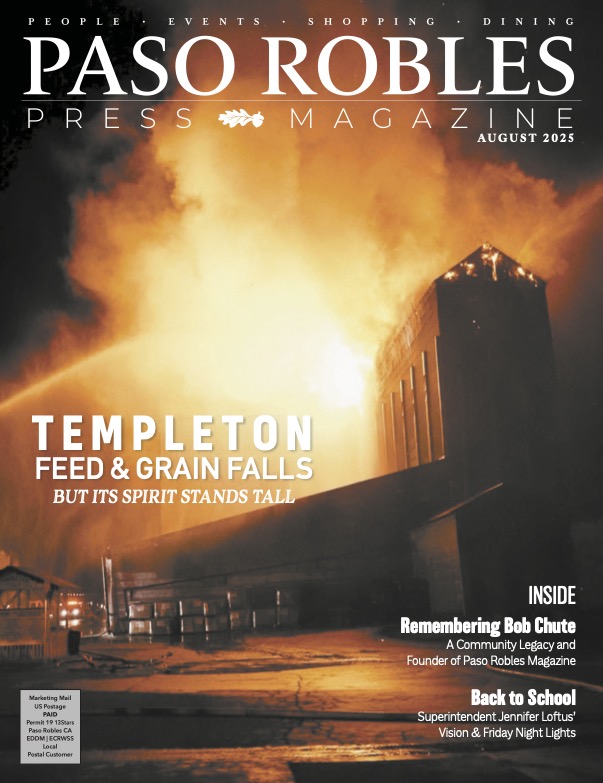The number of hospitalizations and number of ICUs decline together … happened again today,” “Hospitalizations down .4 percent, and a 1.2 decline in ICUs. Also significant, is the number of PUIs, that is Persons Under Investigation, dropped as well. Only reinforcing what we stated yesterday, is a stabilization.”
With infections and deaths increasing, Newsom remarked that “we are not out of the woods.”
“That is why I continue to encourage all of you to keep doing what you did that led to that stabilization,” Newsom said. “It leads me to further the call for physical distancing, social distancing, and appropriately wearing face coverings when you cannot practice distancing when going into a grocery store or elsewhere.”
The early response by California to COVID-19 is credited as the reason the state is doing a remarkable job in “flattening the curve.” California was the first state to begin canceling events and instituting shelter-at-home orders. Direct communication by the Governor, and direction to physical and social distance, as well as the shuttering of public spaces that were being heavily trafficked without regard to personal space were decisive actions.
Now, the state has seen some manageability around the coronavirus spread, although high numbers of hospitalizations in urban areas and the deadliest 24-hour period since coronavirus hit the states (115 coronavirus-related deaths on Wednesday). The state is at a crossroad, with a clamoring for opening by some, and a demand for continued shelter by others. The leaders are caught in the middle, making decisions based on the best available information with consideration for both sides of the arguments.
With warming weather and any glimmer of hope for a return to normalcy, the challenge for the leaders will rise with the volume of voices on one side and the other. On one hand, if continued health and safety measures, like distancing, masking, gloves, and personal hygiene are not observed, the cases of COVID-19 may spike over a seven-day period. Likewise, if forward progress is not made in opening the community and economy, those pent up with frustration will vent their disapproval and make the decisions by local leaders even more difficult in managing the situation.
“We are walking into a very warm weekend,” Newsom said. “The most beautiful weekend since January, or arguably last summer. People are going to want to go to the beaches, the parks, or on a hike. I anticipate there will be a significant increase in volume. I also think, if there is and people are not practicing physical distancing, I’ll be announcing in a week or so that these numbers are going back up.”
The state, and SLO County, are held in a delicate balance between two undesirable choices. It may be appropriate that this is all happening in a presidential election year, as the United States is familiar making decisions between the lesser of two evils every four years.
As with an election, it is not only up to the leaders, but up to the general population to make the decision to keep flattening the curve, and maintain social and personal health. The danger looms that relaxing of caution will result in an increase of infections, hospitalizations, and ultimately deaths by COVID-19.
“I don’t think anybody wants to hear that,” Newsom said. “I don’t want to share that information. But that is less up to me, and more up to you.”
Last week, Newsom introduced six indicators that the state government is working with to make decisions on how quickly or slowly there will be a socio-economic recovery and reopening. He will provide an update on Friday at noon to discuss progress.
“I encourage everyone to be safe, stay at home to the extent possible, and practice physical distancing,” Newsom said. “We’ll continue to practice what we preach, and that is constant, never-ending updates to you on our thinking about how these six indicators are telling us, and how they are guiding us on next steps and next announcements.”
The six indicators the State is monitoring in order to modify the stay-at-home order are:
- The ability to monitor and protect our communities through testing, contact tracing, isolating, and supporting those who are positive or exposed;
- The ability to prevent infection in people who are at risk for more severe COVID-19;
- The ability of the hospital and health systems to handle surges;
- The ability to develop therapeutics to meet the demand;
- The ability for businesses, schools, and child care facilities to support physical distancing; and
- The ability to determine when to reinstitute certain measures, such as the stay-at-home orders, if necessary.
“Yesterday, we made that first announcement to pull back on our stay-at-home order,” Newsom said. “That was a positive sign, but it was that indicator that gave us that green light. We need to see other green lights in those other indicators.”
Progress by the state will be managed in phases, and based on a number of factors that take all elements of the economy and community health into account.
“It won’t be a letter I receive, or a tweet,” Newsom said. “It won’t be the expression of frustration I or all of you share in terms of the stay-at-home order. It will be those indicators that drive our decision-making. We don’t debate dates, we look at the facts objectively. We are not ideologues, I’m open to argument, interested in evidence.”
SLO County has been vocal in asking for local control to address local issues. Assemblyman Jordan Cunningham sent a letter signed by local officials to request authorization.
“I’m well-aware of the arguments of regionalism in this state,” Newsom said. “I’m well-aware that this state is many parts, not just one body, and I recognize the differentiation between the regions of this state. We monitor that, and understand that in detail. That data is all matched up and collected through that lens of the six key indicators and the roadmap to recovery, I assure you, in real time.”
Newsom dictated that the State will act upon the movements of a dimmer switch, not a light switch.
“There is no such thing as reopening back to ‘normal,'” Newsom said. “It will be a normal with caveats. It’s reopening with conditions. This virus, we are not immune from it. There is no vaccine, and no therapeutics that we have identified that we can manufacture and distribute to scale to mitigate the impacts of this disease.”
The governor pressed on the community to maintain connection, caution, and care for each other to keep the spread of COVID-19 at a manageable rate.
“We need to continue to spread the word of vigilance,” Newsom said, “and maintain our values to one another, and the value we hold dear is the notion that we are all in this together. It is not individuals, it is individual acts on behalf of the community to save lives and get the economy back much sooner than we would if we went back in fits and starts.”
The overall health of California, as a community and an economy, is not a short-term goal, and the governor and his team has the eye on the longterm health.
“I assure you I am looking to start up the engine of this economy,” Newsom said. “I want you to know that we had a wonderful conversation. I had the counsel of all the living governors in the State of California — two Republicans and two Democrats — we spent an hour talking about their ideas and strategies and their experience when they were facing budget shortfalls, economic challenges, earthquakes and fires. Then we had a conversation with some of the most well-known icons in business and social justice.”
Newsom will address the state live on Friday at noon.

